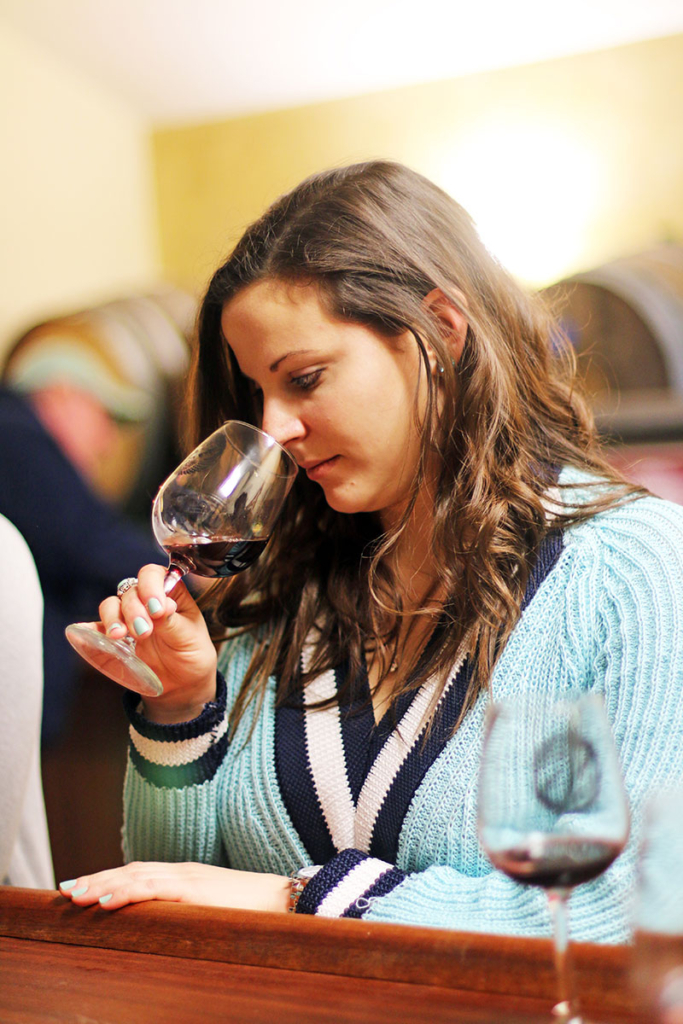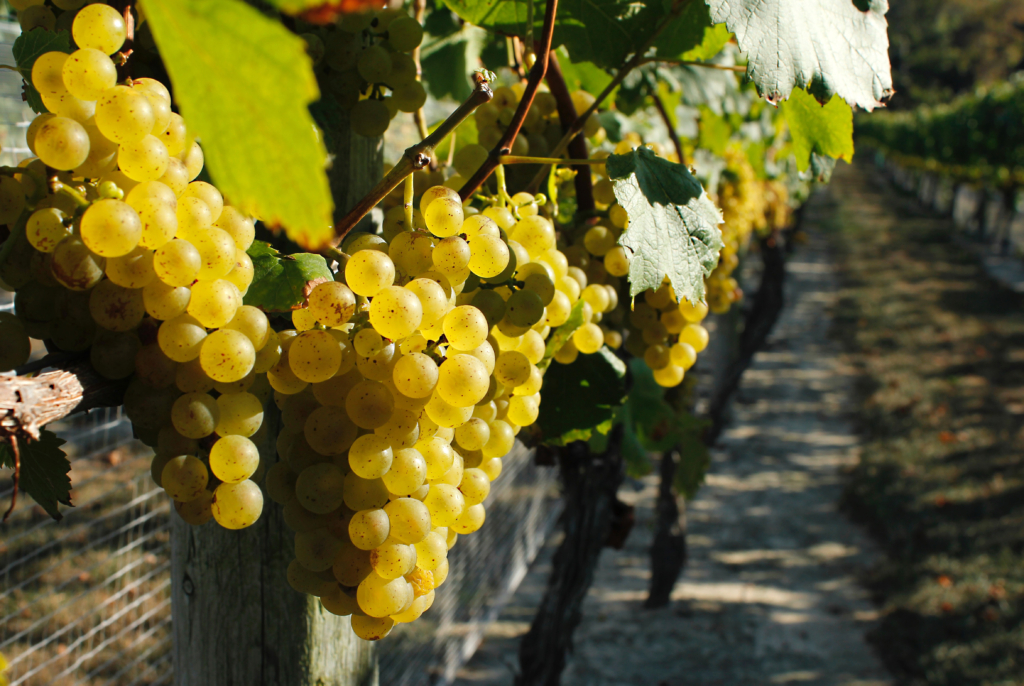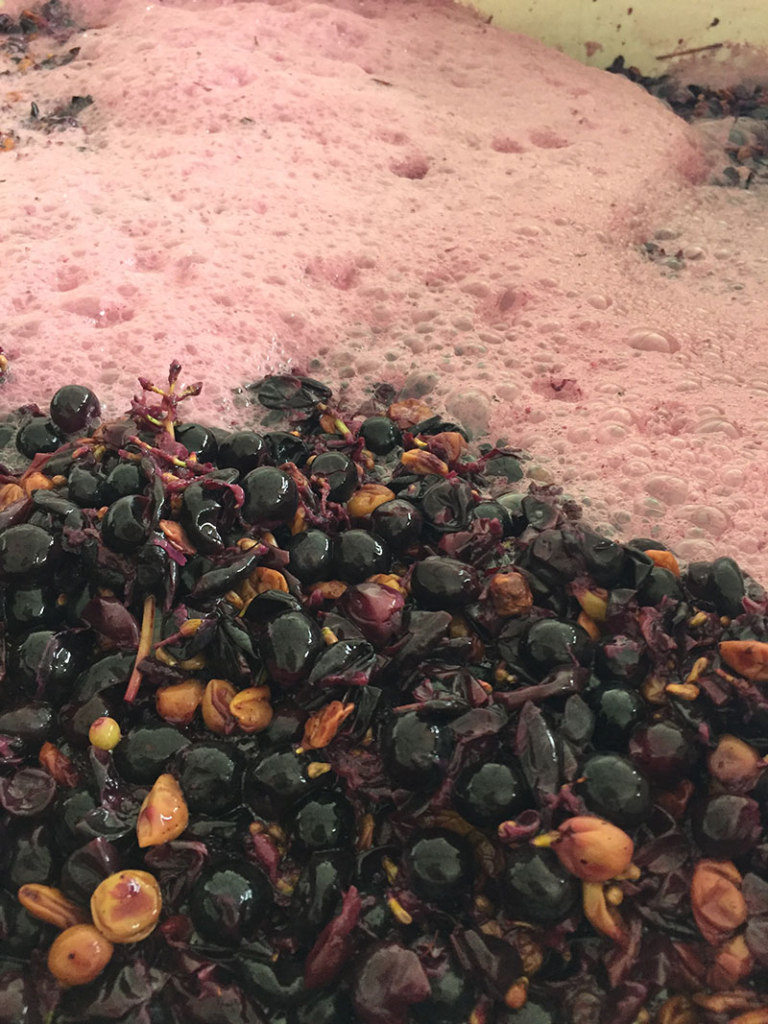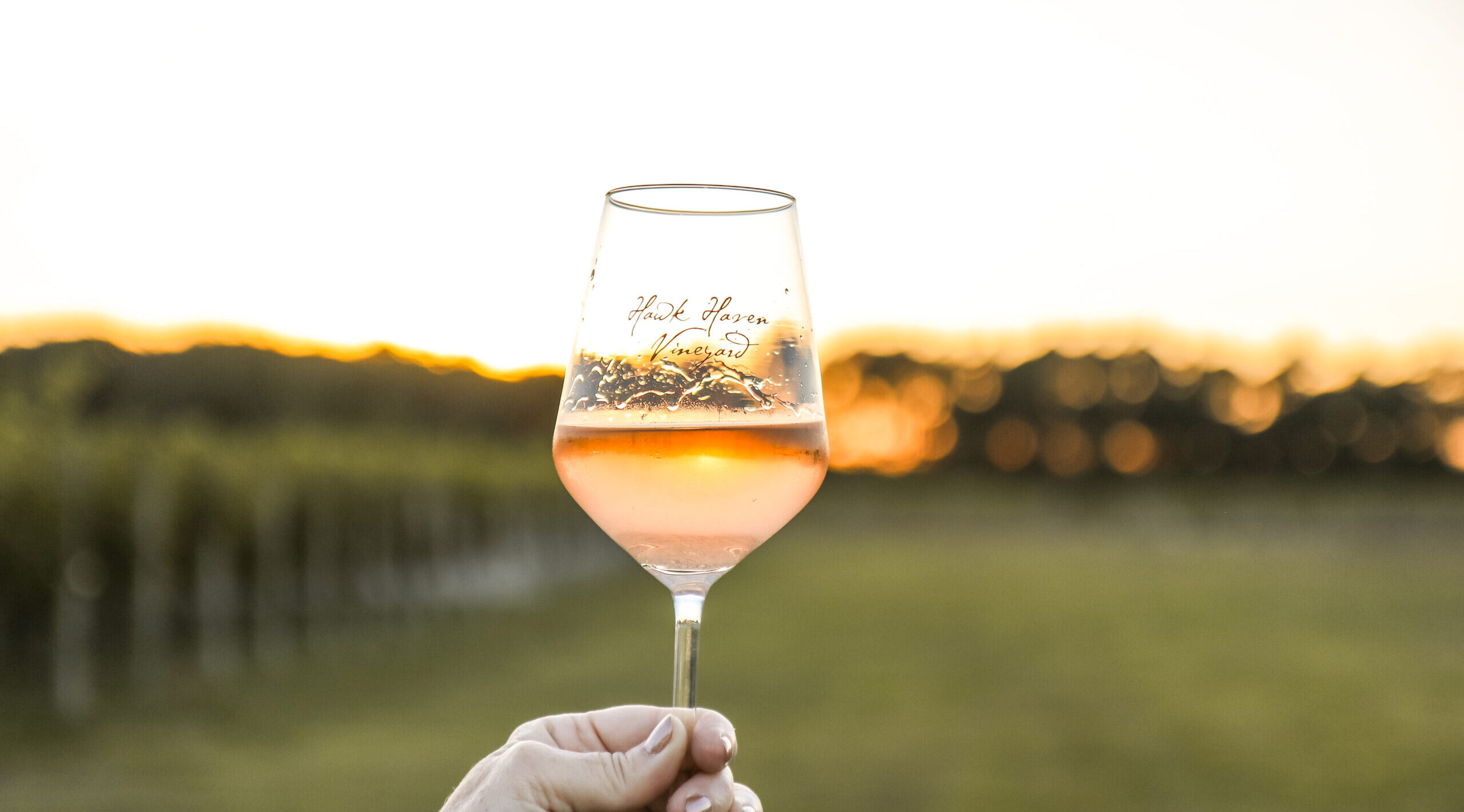
WHAT’S THAT SMELL? AROMAS IN WINE

“You’ll get notes of green apple skins, lemon, pear, and ginger in this wine.”
These are just some of the words you might hear during a wine tasting. A large misconception is that those descriptors are actually put into the wine. Here at Hawk Haven, we only use grapes to make our wines – no other fruit is added to achieve specific smells. So when you hear wines described as having a ‘bouquet’ of specific fruits or other aromas, how do they get into the wine? In this week’s Wine Wednesday, we’ll be exploring the three major groups of aromas in wine: primary from the grape, secondary from fermentation, and tertiary from aging.
Primary Aromas – Straight from the Grape
Flavor is the combination of aroma and taste. Without aroma, you don’t have flavor. This is the reason you might have plugged your nose as a kid when your parents made you eat that food you hate, to try to not fully taste what seemed disgusting. Aroma is a volatile compound, meaning it evaporates easily. When you swirl your glass of wine, you’re releasing more of the aromatic compounds into the air, making it easier to smell the wine. Additionally, when you leave a bottle of wine open overnight or for several days, the wine will taste “flat” because the aromas have evaporated out of the wine.
Vitis vinifera is the main species of grape vine used for wine production. The different grape varietals, or types, used for wine come from either cross-breeding or mutations. For example, Chardonnay and Cabernet Sauvignon are technically the same species, but are different varietals with very different characteristics. Each grape varietal is commonly associated with a range of aromas that change in intensity from factors like climate, soil, and sun exposure.

Pyrazine is the aromatic compound that can make wine smell like bell pepper or grass, and is very commonly associated with Cabernet Sauvignon, Cabernet Franc, and Sauvignon Blanc. Terpenes are known for floral notes of rose, Christmas trees, lychee, and lavender in wines like Gewürztraminer, Grenache, and Syrah. Thiols are responsible for the fruit aromas in small amounts, such as grapefruit in Sauvignon Blanc or black currant in Merlot. Esters bind with the acid in a wine, and are the foundation of several fruit and floral flavors in a wine. For example, esters give Chardonnay its apple or pineapple aroma. They are much less stable than other aromatic compounds in wine, and usually fade after just a year. More than 160 esters have been identified in wine!
Secondary Aromas – Fermentation and Other Winemaking Practices
Fermentation and other winemaking practices can have a huge impact on the final aroma of a wine. Malolactic fermentation is a form of secondary fermentation, where bacteria convert the tart malic acid in wine into creamy lactic acid. This fermentation usually goes hand-in-hand with oak aging, in which lactones give wines notes of vanilla, coconut, and butter, such as in oaked Chardonnay. Another form of secondary aromas comes from aging a wine “sur lie” or “on the lees.” Lees are the remaining yeast after fermentation. Sur lie aging is common with sparkling and white wines. This process can add aromas of toast, brioche, and nuts to sparkling wines, and aromas of caramel, clove, smoke, and vanilla to white wines.
Fermentation and other winemaking practices can have a huge impact on the final aroma of a wine. Malolactic fermentation is a form of secondary fermentation, where bacteria convert the tart malic acid in wine into creamy lactic acid. This fermentation usually goes hand-in-hand with oak aging, in which lactones give wines notes of vanilla, coconut, and butter, such as in oaked Chardonnay. Another form of secondary aromas comes from aging a wine “sur lie” or “on the lees.” Lees are the remaining yeast after fermentation. Sur lie aging is common with sparkling and white wines. This process can add aromas of toast, brioche, and nuts to sparkling wines, and aromas of caramel, clove, smoke, and vanilla to white wines.

Tertiary Aromas – Aging in the Bottle
The last set of aromas: tertiary. Some tertiary aromas come from micro-oxygenation, or the gradual introduction of oxygen into a wine, resulting in aromas of hazelnut or almond. Aging can also reveal hidden aromas in a young wine: cigar box, smoke, cedar, or clove. Lastly, if a wine is heated, the aromas can smell more caramelized, like a toasted marshmallow or caramel. This technique is purposefully done Madeira, but can also be a fault in wines called Madeirizing.
Isn’t it amazing how a simple wine grape can end up smelling like a million different things? Not to mention how overwhelming it might seem to know all the scents your olfactory organs can potentially perceive in a single wine. But practice makes perfect, and the best way to train your sniffer is to thoughtfully smell new things. When you smell a wine, start with categories (fruity, floral, earthy, etc.) and then work on narrowing it down (fruity- berry, citrus, dried, etc.). Before you know it, you’ll be an aromatic expert!

